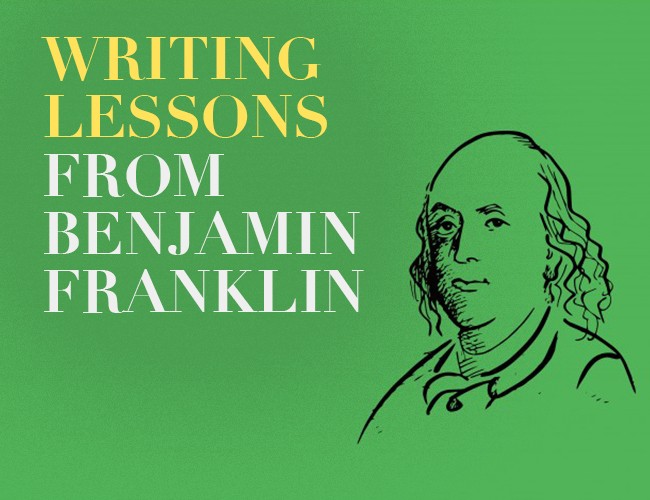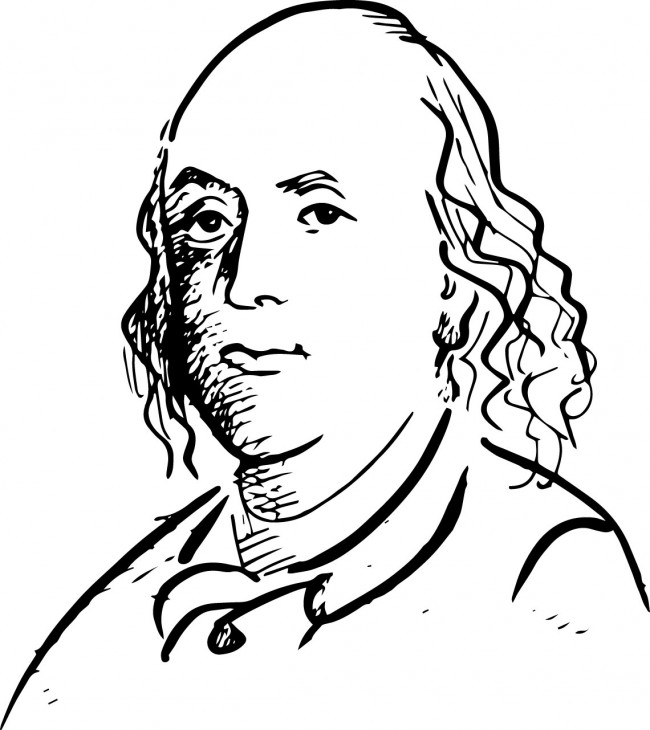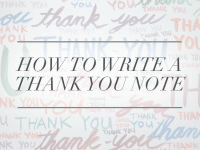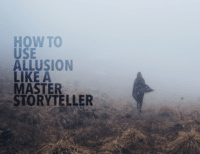There are many ways we can learn to write more expressively. We can read all of the posts on The Write Practice and join Becoming Writer, or we can take writing lessons from Benjamin Franklin.

What Benjamin Franklin Can Teach You About Writing
Benjamin Franklin wrote about how he taught himself to write more elegantly and expressively in his autobiography, The Autobiography of Benjamin Franklin. Benjamin Franklin found writing he admired in the Spectator, and then imitated the writing.
Benjamin Franklin learned how to be original in his expressions by first learning how to imitate others.
“With this view I took some of the papers, and, making short hints of the sentiment in each sentence, laid them by a few days, and then, without looking at the book, try'd to compleat [sic] the papers again.”
— Benjamin Franklin, The Autobiography of Benjamin Franklin
The Franklin Five-step
Step One: Find writing you would like to emulate.
Step Two: Make short notes about the view or opinion of each sentence.
Step Three: Wait a few days, and then write a piece only using your notes on each sentence.
Step Four: Go back and read the original writing selection you chose and compare it to the writing you did.
Step Five: Find any faults, and correct them.
“Then I compared my Spectator with the original, discovered some of my faults, and corrected them.” — Benjamin Franklin,
Find Writing You Would Like To Emulate
Perhaps you like writing that is simple and unadorned like Ernest Hemingway. Or perhaps you prefer the flowery writing of Thomas Wolfe. As a writer of nonfiction, particularly memoir, the author I admire is James Herriot.

Two Ways To Use The Franklin Model
Rewrite a sample of writing in your own words as suggested in the five steps above. Another way is to use a sample of writing as a model for your own work.
I am using James Herriot's writing as a sample of writing to model my own work.
Here is an example from James Herriot's book, Cat Stories, “He's alive, anyway, Triss,” I said as we began to wash the instruments. “We'll put him on to sulphyridine and keep our fingers crossed that peritonitis won't set in.” There were still no antibiotics at that time but the new drug was a big advance.
Using the excerpt from James Herriot's Cat Stories, as an example, here is my selection.
Forbes magazine editor Lauren Stockbower sent me a fax with the deadline for the film, “We need the film by tomorrow morning. Send it by overnight express today.” I had enough time to get the slides of the head of Seiko processed and then take them to the Fed Ex office in downtown Tokyo. Digital camera's wouldn't be in common use for another twenty years.
The Goal is To Find the Beat To Your Own Song
Every writer has a cadence to their writing. Sort of like a beat in a song. By imitating writers whose musical quality of writing you admire, you will help develop your own beat. You can develop your own cadence by studying well-structured sentences of writing in the style you want to emulate.
In 1998 I took an American Literature class. American Literature 214. As part of the class we had to write papers evaluating the literature we were studying. My first paper I received a C. I had never analyzed literature before and I didn't know how to talk about the story. In the college library, I found examples of well-structured papers. I used this papers as a model to write my own papers.
Here is the first paragraph of an eight-page paper I wrote for my American Literature class after I found writing to emulate. My grade improved after I found examples of papers written by others.
Differing Values in a Patriarachal Society in The Revolt of Mother
The Revolt of Mother by Mary E. Wilkins Freeman
Sarah Penn, the female protagonist of Mary E. Wilkins Freeman's fictional short story, The Revolt of Mother, valued her home and relationships; her husband valued barns and animals. Adoniram Penn had promised Sarah when they wed that he would build her a house on a certain section of their land. She had lived for forty years in a house that was “scarcely as commodious for people as the little boxes under the barn eaves were for doves”, without complaint, until her husband started to dig a cellar for a new barn in the exact spot he had promised to build Sarah a house. After the barn had been built Adoniram went out or town for a few days. In his absense Sarah moved all of their possessions into the new barn.
[Writing is like a Wendy's salad bar. There are many ways to make a salad. But, it's nice to have a recipe.]
Have you ever tried to write using Benjamin Franklin's steps to improve your writing? Please let me know in the comments section.
PRACTICE
For today's practice, spend fifteen minutes finding writing you admire and would like to emulate. Select a short passage and follow the five steps listed above. Then, after you have written your piece, please post it in the comments here. It might take you a few days. I will come back and read the comments.
Please be kind and comment on someone else's writing. Just like it is nice to share your candy, it is nice to read someone else's writing.
xo
Pamela
p.s. The Revolt of Mother was published in Harper Bazaar in September, 1890 and was republished in, A New England Nun and Other Stories (Harper & Brothers Publishers; New York: 1891)







I really like this post, thanks for this! I love fiction + creative writing. And at the moment I’m looking at Chimamanda Ngozi Adichie’s book Americanah. I’m really drawn to her style of writing as she deals with historical narratives but merges it with fiction to bring it to life and addresses a number of different topics within culture, history and society in general. And I guess for me i’m just trying to figure out my own style, what I like to write about and the best way to convey it. So this post couldn’t have come at a better time. Whitney
Hello Whithevisionair,
I am so happy this post was helpful. Thank you for sharing the book you are reading, I love non-fiction and historical fiction. I will look for the book Americanah.
Wishing you all my best on your writing adventure.
xo
Pamela
Ah thank you very much! 🙂
I have just discovered this site causing procrastination from editing my novel! However, I did complete the first writing prompt (though I’m not sure where to post it).
Hello Angelika,
So nice to meet you here. Please share your writing in the comments section on this post. There are different writers every day on this site, I hope you find the information helpful.
What is your novel about? I hope the editing went well today. 🙂
xo
Pamela
The Freak
The girl looked like a waif with mousy brown hair and blue eyes. She was slender like a beanpole and dressed like a boy. She sat in the back of the Algebra II class and thought suicidal thoughts.
“Hey it’s Magpie. You are dumb and look like crap.” Heather O’Reilly hissed, twirling perfect blond hair around a perfect finger.
“I am me and you are you. What you say to me washes off like glue.” Maggie said softly.
“I am gonna beat you up after school, freak. I am going kill you. I am going to rearrange your ugly face.” Heather spat in Maggie’s face.
Mr. Minnwath got nervous and went out for a long cigarette break.
“What happened here?” Detective Wang asked his partner.
“Murder of a teen by a warped teen. Girls.” Detective Collins gave Detective Wang a peek at the corpse.
“The perp even carved freak on the forehead. How awful.”
“She was a looker. The girl that did this is on her way to the station. Let’s head there. ” Detective Collins said.
“This blond girl was a beauty. Wow and the knockers.” Detective Wang said.
“Gross. She is dead and she is old enough to be your daughter.”
“In China, I could marry a girl sixteen. You Americans are soft. Too sensitive.”
“Let’s go pervert.”
At the station, Maggie was screaming and freaking out. The officers had to restrain her. Detective Collins and Detective Wang sat her down in the interrogation room.
“Miss Davis, we want you to tell us your version of what happened to see how it compares to the others.” Detective Wang said.
“She was gonna kill me so I took care of it. It was her or me.”
Hello Diamond Fox,
A very dramatic telling, your characters seemed very real. Little details showed their character. Through description and dialog. “Heather O’Reilly hissed, twirling perfect blond hair around a perfect finger.” “”Hey it’s Magpie. You are dumb and look like crap.”
What writer were you emulating in your piece?
xo
Pamela
I like Jackie Collins, James Patterson, Stephen King, and others who don’t mince words. They say it loud and proud. I am just a beginner.
Wow … this had a big “punch”. Interesting twist.
Thanks for the comment. I like Jackie Collins, Stephen King, James Patterson. I like to be blunt and realistic.
Well taken. I am writing some children’s books and love this website. Thank you!
You are very welcome. 🙂
xo
Pamela
☺☺
Nice article. I’ll try to incorporate the points into my blog posts this week.
Hello Lee,
Thank you. What do you write about on your blog?
xo
Pamela
The title of the blog is ShortInsight. I try to use real life circumstances as a basis to write a short story. I normally try for less than 1000 words. I also try to use everyday occurrences in my own life and those close to me to share some short insightful observations.
The address is http://www.shortinsight.wordpress.com
I have been travelling for a week, so I should have some posts up next week.
Sounds like a delightful approach. I’ll check it out.
That’s kind of you. Thanks.
Thanks, Pamela. Your prompt brought me back many years to what I recognize is the actual foundation of my current exploration of creative writing. I have often said that my writing is influenced by that of my dear friend, Karen. She is likely the first person I knew who thoughtfully placed each rich word individually on the page to build an image which delighted the sensibilities. I learned from observing her craft that emotions could be shifted by selecting one synonym over another. Oh, and by the way, I recently emulated a certain technique of a Ms. Pamela Hodges when I wrote that my mother died “one year six months and fifteen days ago.”
Hello Susan,
Your writing, even though influenced by your dear friend Karen, have the distinct beat of Susan. Yes, one word over another can really make a difference.
I am very sad your mommy died. Maybe we can call it the, “Counting the days” technique. Because each day matters.
Hugs,
Pamela
Thank you, Pamela. Yes …. I remember feeling a shift from a strong connection to my friend’s writing style to owning my own style. I truly enjoy my writing style and carefully selecting words to have a positive impact on my reader. This process of learning and growing in my writing craft, supported by writers and thinkers like you and the others on thewritepractice and ipaintiwrite, is an enriching experience. I relish the process of expanding my writing capabilities and styles.
I like the tag “Counting the days” technique and your message that each day matters. That connection really brings it together to expand the impact of noting the length of time since something happened or began.
Always a delight to “talk” with you, share with you, and learn from you, Pamela.
This is great advice: ‘You can develop your own cadence by studying well-structured sentences of writing in the style you want to emulate.’ Thanks for the excellent post, Pamela (and Joe). Am sharing it.
Hello Bridget,
You are very welcome. I hope your words today have the sweet sound of a bird singing in the spring.
xo
Pamela
Love this, Pamela. Thank you!
Hi Em,
You are very welcome.
xo
Pamela
Such an interesting approach. Thank you so much for sharing and for the examples.
Hi Nancy,
You are very welcome. Do you know which writer you would emulate?
xo
Pamela
Thanks Pamela for a great post and thanks to Benjamin Franklin. Someone also said, it is good not only to read with care the favorite sentences or paragraphs of our favorite writers we like to emulate but, also, to make it a habit of typing the favorite sentences from their writing.
Hello Sarkis,
Oh, great idea. Actually type the writer’s words you love to hear the sound of their writing.
xo
Pamela
Ooohhh … I love that idea!! Thanks.
WHAT AGOOD WAY TO INSPIRE THANKS